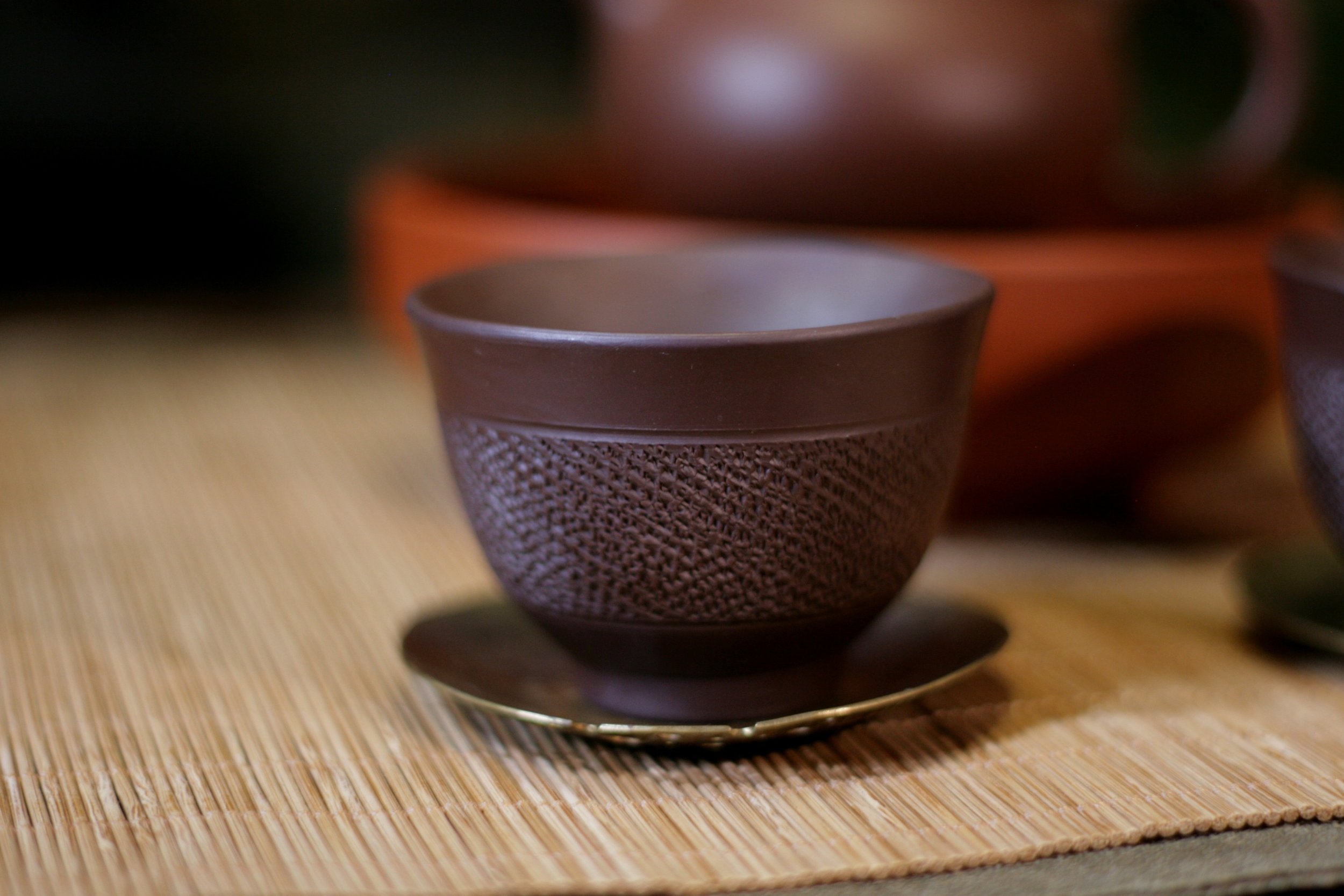 Image 1 of 7
Image 1 of 7

 Image 2 of 7
Image 2 of 7

 Image 3 of 7
Image 3 of 7

 Image 4 of 7
Image 4 of 7

 Image 5 of 7
Image 5 of 7

 Image 6 of 7
Image 6 of 7

 Image 7 of 7
Image 7 of 7








Banko yaki teacup (70)
Banko yaki teacup. 7cm x 5cm. Sold individually.
Banko Yaki is a Japanese ceramics tradition found in Yokkaichi city in Mie Prefecture on the island of Honshu. Unlike many Japanese ceramic traditions, the beginning of Banko yaki is relatively established to a date of around 1736-1740 when the merchant Nonami Rozan established a personal kiln in a nearby city. Rozan stamped the wares he created at this kiln as banko fueki, which means roughly, “eternity, constancy”. The tradition disappeared for a brief period but was reestablished in the 19th century. Banko yaki is characterized by unglazed wares made with an iron-rich shidei clay that creates a unique purple color. The clay is very heat resistant and, along with teapots, Banko yaki is known for its cookware that can withstand direct flame.
Banko yaki teacup. 7cm x 5cm. Sold individually.
Banko Yaki is a Japanese ceramics tradition found in Yokkaichi city in Mie Prefecture on the island of Honshu. Unlike many Japanese ceramic traditions, the beginning of Banko yaki is relatively established to a date of around 1736-1740 when the merchant Nonami Rozan established a personal kiln in a nearby city. Rozan stamped the wares he created at this kiln as banko fueki, which means roughly, “eternity, constancy”. The tradition disappeared for a brief period but was reestablished in the 19th century. Banko yaki is characterized by unglazed wares made with an iron-rich shidei clay that creates a unique purple color. The clay is very heat resistant and, along with teapots, Banko yaki is known for its cookware that can withstand direct flame.